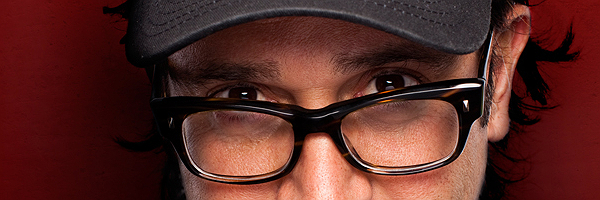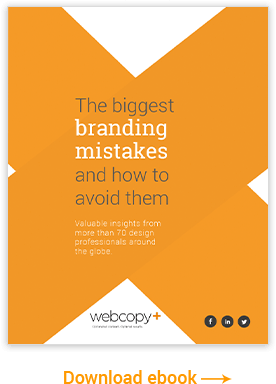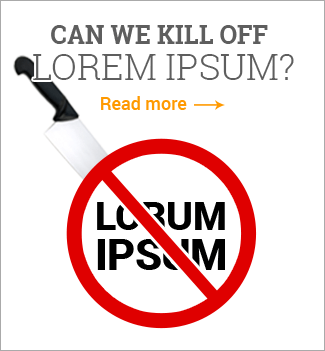
Words carry emotion. Words like hope, freedom, desire, sale and cheap inspire emotional reactions deep in the limbic system. Given the power of these emotion associations, it’s no surprise that copywriters use them to propel people to action. Yet, there are potential pitfalls. Let’s look at how different companies are using emotional language to see what’s working and what’s not.
Continue reading →
Posted on Nov 7 2011 10:48 pm by Web Copywriters
tags: Website Conversions Writing for the Web
|
category: Writing for the Web |
Leave a comment

We all know that B2B marketing differs from B2C. B2B’s longer and more complex buying process has implications for marketing — and your web copy. Here are some tips to get your B2B web copy right.
Continue reading →

Humour is a great way to sell. It catches people’s attention, engages them, and injects an element of humanity into otherwise static information. People love to be entertained, and if you can keep them amused while promoting your products or services, then all the better (nice job, Old Spice). What’s more, humour can be a great way to distinguish yourself from the competition (take a bow, Groupon).
Continue reading →

Good marketers and copywriters alike know the more you understand your target audience, the better job you can do writing and delivering your message. Sure demographics help — age, location, marital status, ethnicity and religion. But you’ll have a much richer understanding of your ideal customer if you get to know their psychographics — their lifestyles, behaviors and attitudes.
Continue reading →

Marketing is a critical lifeline for any business. It helps identify, attract, satisfy and keep customers. So we asked creative professionals in the marketing realm: What’s a key marketing element most businesses neglect?
Continue reading →
Posted on Jul 10 2011 2:01 pm by Web Copywriters
|
category: Business & marketing |
2 Comments

Adaptability, creativity and multiple delivery methods make two-time and reigning UFC Welterweight Champion Georges “Rush” St-Pierre (GSP) virtually unstoppable in the ring. Despite your weight class — make that your business size — marketers can take a page from this Canadian mixed martial arts master.
Continue reading →
Posted on Jun 20 2011 8:57 am by Web Copywriters
tags: Business and the Web Marketing
|
category: Business & marketing |
1 Comment

Webcopyplus recently stole a moment from Guy Kawasaki, an entrepreneurial legend, celebrated author and former chief evangelist of Apple (he was one of the employees originally responsible for marketing the Macintosh back in 1984 — enough said). We shot a few questions at him, and you might — or might not — be surprised to learn what brand he’d like to work with.
Continue reading →
Posted on Jun 7 2011 8:22 am by Web Copywriters
tags: Branding Business and the Web Marketing
|
category: Business & marketing |
4 Comments

That depends… does your website contain quality content? Google’s latest algorithm change, which they are calling significant compared to the ongoing subtle changes, will impact 11.8% of search queries. What kind of impact? Essentially, high-quality content will be rewarded with higher rankings, while websites with low-quality content will plummet, and in some cases, disappear from search results. Even websites containing predominantly good content can be hurt by a few bad pages. Ouch!
Continue reading →

Some companies post fluff on the web as a marketing strategy. We’ve all seen it: “helpful” articles written without the benefit of a decent encyclopedia by writers paid pennies per post. Until recently, Google’s preference for content-heavy sites rewarded these content farms with improved search rankings.
In February, Google took steps to downgrade the search rankings of high volume, low quality sites by making a significant adjustment to it’s algorithm. In April, Google expanded its algorithm change from just U.S. sites to all English-language sites. By some estimates, visibility of some of these sites fell as much as 94% after Google’s initial adjustment.
But fluff isn’t just limited to content farms. Could your site get caught in Google’s fluff reduction efforts? How much of your website is fluff?
Continue reading →

Our copywriters recently caught up to Scott Goodson, Founder and Chairman of StrawberryFrog, “the world’s first Cultural Movement agency,” with offices in New York, Amsterdam, Mumbai and Sao Paulo. Pushing innovation and brand building boundaries for over a quarter of a century with agencies based in Canada, Sweden and the US, he’s helped brands such as P&G, Heineken, Pepsico, Starbucks and Daimler Benz, to name a few. So we felt compelled to ask him about everything from when he first fell in love with the Internet to what he cherishes most about designers.
Continue reading →
Posted on May 15 2011 7:00 pm by Web Copywriters
tags: Branding Business and the Web Working in the Web
|
category: Web world at large |
1 Comment














